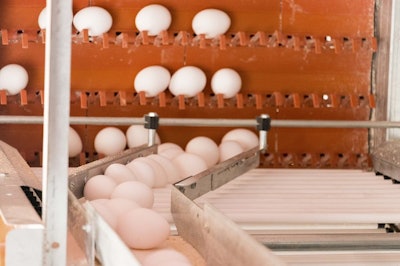
Housing pledges and state laws accelerated the U.S. cage-free movement. However, the change has caused several management issues and forced producers into situations they are unfamiliar with.
Management issues with cage-free layers were examined by Dr. Darrin Karcher, Purdue University Associate Professor and Poultry Extension Specialist, at the 2022 Multi-State Poultry Feeding and Nutrition Conference and Danisco Animal Nutrition & Health’s Technical Symposium.
“There is nothing consistent when we start talking about cage free,” stated Karcher.
“Our only source of knowledge is experience. The reality is, as producers learn how to work in this type of environment and start to do things differently, everything will change.”
While the egg farmer association United Egg Producers (UEP) classifies five different cage-free houses in its standards, difficulties in management have led to producers to make minor changes within their systems to suit their birds. Small changes can add up to big differences between facilities, resulting in hundreds of cage-free system types.
“However, when these small tweaks don’t work, it is not shared with other producers,” added Karcher. This lack of communication about the errors causes mistakes to be repeated across the industry multiple times.
Addressing each flock individually through a stockman who understands the specific details of the housing system, feeding schedules, the vaccination program, lighting and bird behavior would be beneficial for flocks.
“We need to have a stockman walking the facility that understands the behavior of the birds and how they are interacting. The stockman should be able to notice those subtle cues and know if something is wrong with the birds,” he said.
Additionally, flock size is a variable affecting management strategies that differs between U.S. and European cage-free houses. In the U.S., it is not uncommon to see a house of 90,000, cage-free layers needing to be managed all at once.
“If we look overseas, flock sizes are typically around 10,000 birds, so their attention to detail, one could argue, might be more proficient,” stated Karcher.
Moreover, while trying to maximize flock size, the industry is increasingly building size vertically instead of horizontally, further affecting management strategies.
“To maximize the footprint of our buildings, we are building skyscrapers. Two or three levels high now, and maybe even higher in the future. We need to start thinking about how that changes the way producers should manage birds on the bottom floor versus the third floor,” he said. “Those are going to give us very different outcomes. Does the industry currently have the skill set to do that?”


















